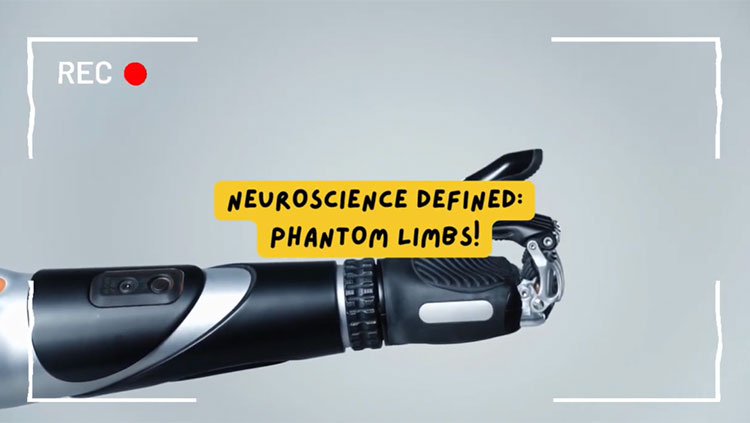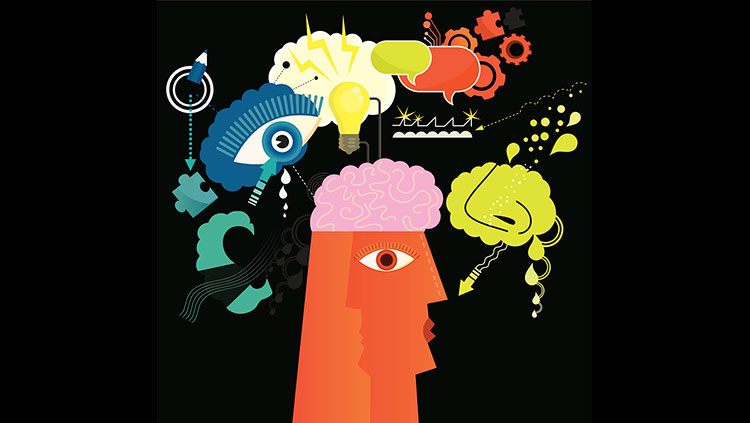How Creative Ideas Are Processed
- Published28 Oct 2022
- Source BrainFacts/SfN
You might be at your most creative when you’re hyper-focused and immersed in a task. Or perhaps it’s when your mind wanders, and you shift your attention to another task (or to nothing at all). Three different networks in the brain are likely involved with creativity: the executive attention network, default mode network, and salience network. These networks help you concentrate and detect errors, create pictures in your mind, and filter important ideas from less important ones.
This is a video from the 2022 Brain Awareness Video Contest.
Created by Nathaniel Sabater.
CONTENT PROVIDED BY
BrainFacts/SfN
Transcript
The human mind is the center of amazing wonders. Built with complex neural networks capable of generating novel ideas, our creativity is what sets us apart from our relatives in the animal kingdom. In this video, let’s talk about the processing of creative ideas.
Creativity involves the production of novel ideas for a certain problem. American psychologist E. Paul Torrance mentioned that creativity entails elements of flexibility, originality, fluency, and elaboration. Whether it is the next line in the song you’re writing or a plot in a movie, every idea sprouts through a series of steps.
Social psychologist Graham Wallas mentioned that the creative process starts with the preparation stage, where we identify the question or problem at hand. Followed by incubation stage, where we let our minds brainstorm for an idea or solution. Next, when insight springs to mind, this is the illumination stage, or our “AHA moments” take form. At last, the creative idea will undergo the verification stage, where ideas will be evaluated whether it answers the problem or question.
Creativity is a complex process, so there is no singular brain region responsible for it. However, it is suggested that creativity is processed by three large-scale networks:
First, the executive attention network is located in the lateral prefrontal cortex and posterior parietal lobe, which is like a laser beam to tasks with a heavy cognitive load, enabling error detection and concentration.
The default network, located in the prefrontal cortex and temporal lobe, allows us to create pictures in our head ¬— that’s why it’s also known as the imagination network. Meanwhile, the salience network, composed of the dorsal anterior cingulate cortices and anterior insular, is considerably a sorting warehouse because it filters the important ideas.
Our creative brains are like a computer. Sometimes, it loads ideas fast and we are in the zone, but sometimes it has its hang time because we need time to process our ideas further or we need to zone out.
When we creatively solve or generate ideas, we may enter the “flow state.” As introduced by psychologist Mihaly Csikszentmihalyi, a person in a flow state becomes hyper-focused and immersed in the task at hand that one loses track of time.
Individuals experiencing flow have a heightened creative process. In a study, scientists experimented on two groups — the flow group and the control group. The flow group underwent transcranial magnetic stimulation, resulting in a heightened sense of consciousness found in flow. Both groups were tasked to solve the incorrect arithmetic statements of Roman numerals presented as match sticks by moving them while maintaining their current number. Based on the experiment, 40% of the flow group successfully solved the problem compared to the control group. This shows that flow is a part of creative thinking.
On the other hand, sometimes the incubation stage entails letting our minds wander or shifting our attention to marinate our ideas. Hence, that’s why some of the bright ideas appear randomly or when we take a break.
In a study conducted by UC Santa Barbara, two groups — the mind wandering and control group — were instructed to complete a compound remote associate problem, which involves thinking of a word that connects three seemingly unconnected words. They found out that the mind-wandering group answered the tasks quicker.
So if you ever got stuck in a problem? Maybe take a shower or go for a walk and let your mind wander, and maybe you may have your next “AHA” when you least expect it. “Out of the box” thinking requires a light switch between being “in the zone” and “zoning out” by employing different brain regions and creative processes.
Indeed, it’s surreal that an organ is capable to create so many possibilities when creative ideas sprout — this is an important piece that makes us human.

















